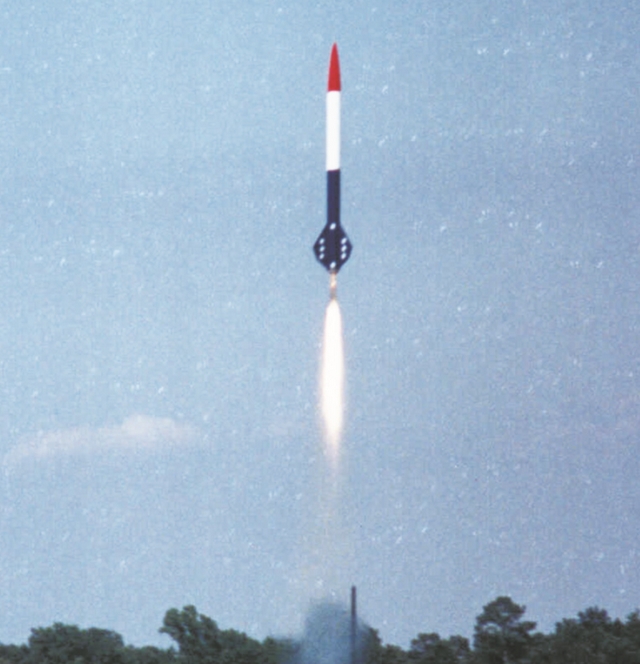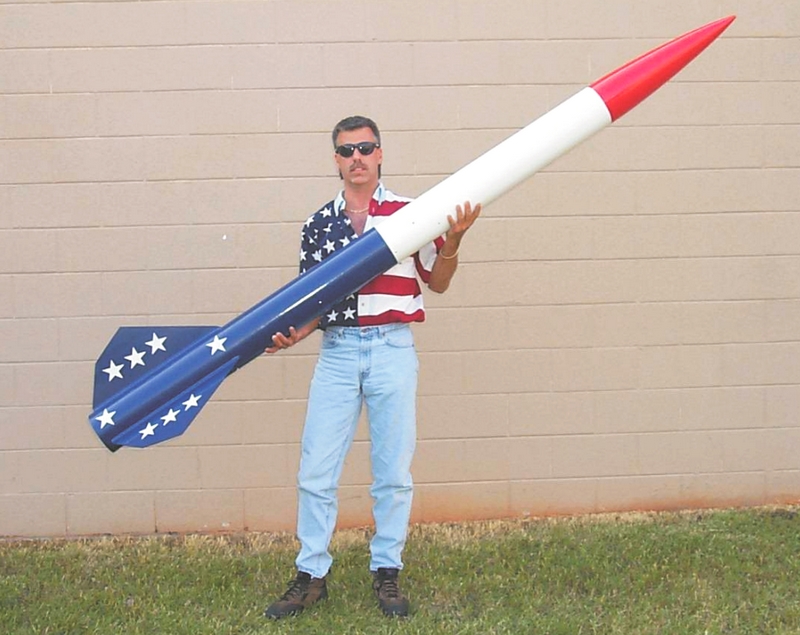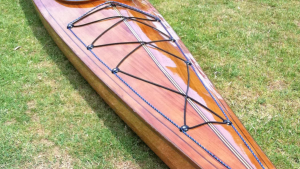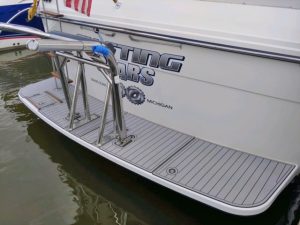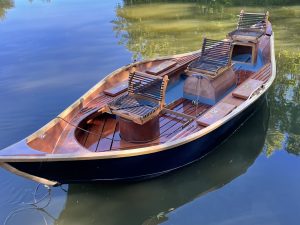
Above: Palmer Hudson with his epoxy rocket, Glory. The rocket was 6″ in diameter and 9′ tall. The 3″ diameter motor was about 22″ long, with somewhere around 623 lb of thrust and a burn time of 2.6 seconds.
Palmer Hudson’s epoxy rocket, Glory was built out of phenolic tubes covered with fiberglass cloth. All construction was done using the WEST SYSTEM® Epoxy and Fillers.
The phenolic tube, which is a popular material for the airframe, is enhanced with a coating of epoxy to help prevent material shredding that can occur at supersonic speeds (which many of these rockets are capable of exceeding).
Some epoxy rocket builders further reinforce the tube with a layer of fiberglass fabric. More advanced methods of construction incorporate carbon fiber laminate which would be lighter and stiffer than the cardboard tube, resulting in greater altitude and time aloft–to primary goals of the amateur rocketeer.
Fins, typically constructed of G-10, an epoxy/fiberglass laminate, are bonded with the epoxy often with fillets that aid rigidity and prevent flutter at high speeds.
